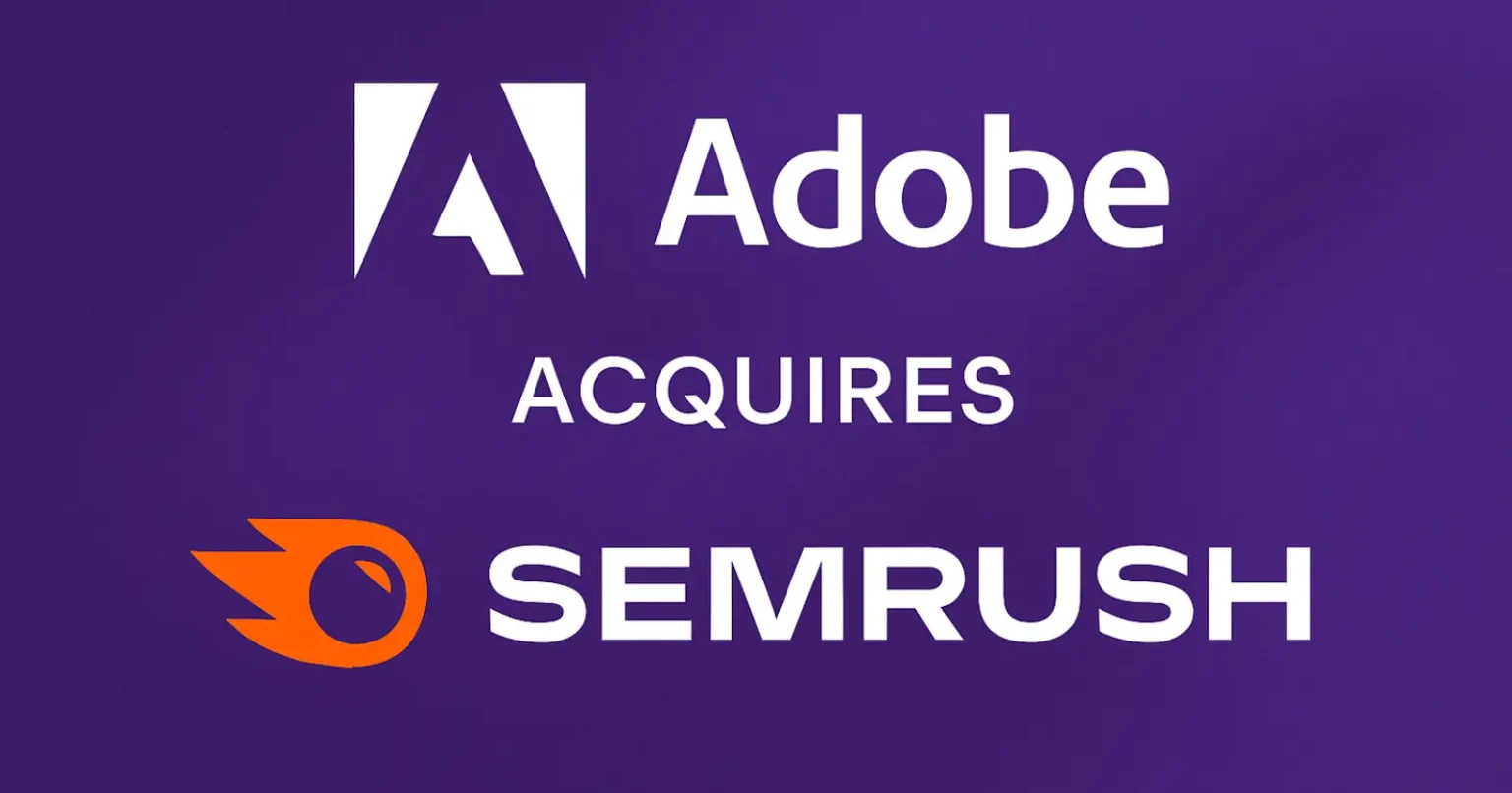In a bold play for the future of marketing, Adobe has announced that it will acquire Semrush, the well-known search engine optimization (SEO) and brand visibility platform, in an all-cash deal worth $1.9 billion.
What’s in the Deal
- Adobe will pay $12 per share, valuing Semrush at approximately $1.9B.
- The transaction has been approved by the boards of both companies, and is expected to close in the first half of 2026, subject to regulatory and shareholder approvals.
- Semrush’s founders and other stockholders, representing over 75% voting power, have committed to support the deal.
Why Adobe Is Making This Move
Adobe says the acquisition supports its vision in the “agentic AI era”, combining Semrush’s SEO and Generative Engine Optimization (GEO) capabilities with Adobe’s existing Experience Cloud tools like Adobe Experience Manager, Adobe Analytics, and its new Brand Concierge.
GEO + SEO: Semrush’s GEO tools help brands understand and optimize their visibility not just on traditional search engines, but also across large language models (LLMs) and AI-driven interfaces like ChatGPT and Google Gemini.
According to Adobe, this unified solution will give marketers a more complete understanding of how their brands appear across owned channels, AI platforms, and the wider web.
Semrush’s Growth Story
Semrush is not just about SEO anymore:
- In its most recent quarter, it reported 33% year-over-year growth in its enterprise Annual Recurring Revenue (ARR). Semrush Investor Relations
- It serves major global clients, including Amazon, JPMorgan Chase, and TikTok.
- Over the years, Semrush has built a strong reputation in search intelligence, competitive research, content insights, and social media analytics.
What the Leaders Are Saying
Anil Chakravarthy, President of Adobe’s Digital Experience business, emphasized the shift in how brands need to be visible today:
“Brand visibility is being reshaped by generative AI, and brands that don’t embrace this new opportunity risk losing relevance and revenue. With Semrush, we’re unlocking GEO for marketers as a new growth channel alongside their SEO.” Business Wire
On the Semrush side, CEO Bill Wagner described the move as “the right move at the right time” a sentiment he also echoed in his recent LinkedIn update here:
He highlighted that combining Semrush’s visibility tools with Adobe’s AI-oriented marketing stack provides marketers a unified, end-to-end platform for customer experience — from search to AI interfaces.
Wagner also praised his team’s hard work and expressed excitement about accelerating their shared vision with Adobe.
Strategic Implications
- Stronger AI Marketing Stack
Adobe’s acquisition of Semrush strengthens its marketing suite, helping customers optimize both for traditional SEO and the newer frontier of AI-powered search. - GEO as a Growth Lever
By embracing GEO, Adobe is betting that brands will increasingly need to be discoverable inside LLMs — not just on Google. - Integrated Workflows
With Semrush tools embedded in Adobe’s platforms, marketers may benefit from more seamless workflows: research, content creation, visibility tracking, and analysis — all in one ecosystem. - Competitive Signal
This move could intensify competition in the martech space. Other marketing-tech players may now feel more pressured to offer similar AI + visibility solutions.
Risks & Challenges
- Integration Risk: Merging Semrush’s suite with Adobe’s existing tools will require careful execution to preserve value and prevent disruption.
- Regulatory Hurdles: The deal still needs approvals, so there is potential for delays or conditions.
- Customer Retention: Semrush’s enterprise customers will closely watch how the product evolves under Adobe, especially around pricing and roadmap.
Why It Matters
In an era where consumers are increasingly using AI chatbots and LLMs to discover brands and services, this deal is more than just another acquisition. It signals Adobe’s commitment to redefining brand visibility for the AI-first world. For marketers, it could mean a more powerful and unified toolkit to measure and shape how their brands are seen — not just on search engines, but within the next generation of AI interfaces.


